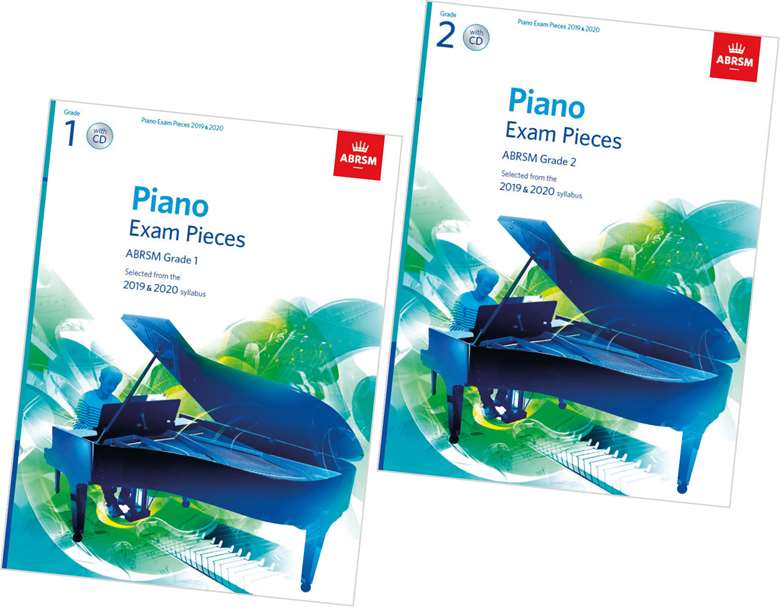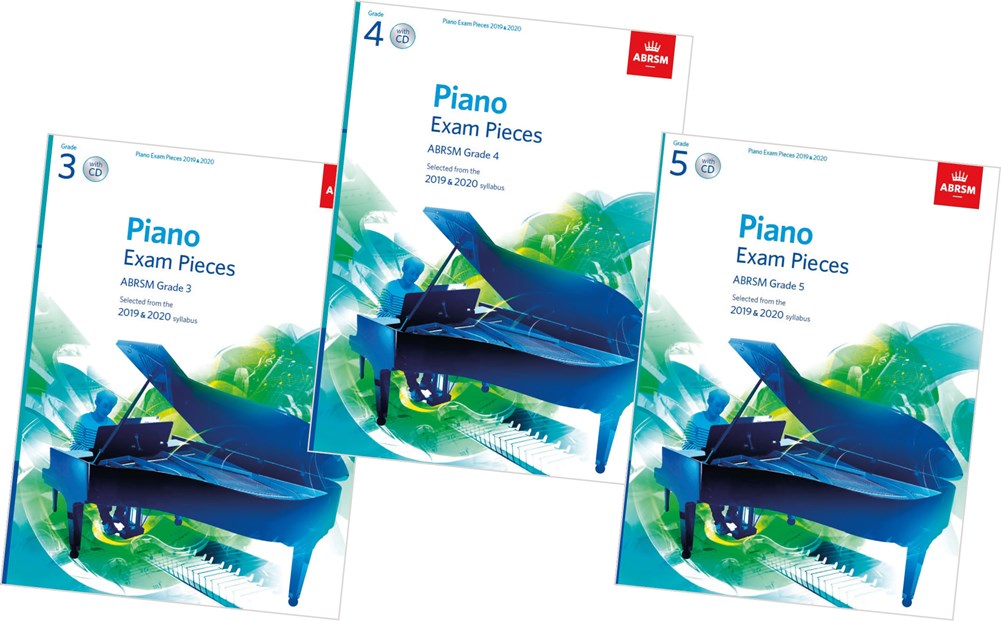Piano Reviews: ABRSM piano syllabus 2019-20, Grades 1-5
Fiona Lau
Wednesday, August 1, 2018
Fiona Lau reviews ABRSM's new piano syllabus for 2019 and 2020, Grades 1-5.

It is always exciting to review a new piano syllabus: to see if there are any radical changes, to spot old favourites and find new ones, to identify what will keep the interest of some and stretch others? I also look out for trusted arrangers, music from the core teaching canon, and for a logical progression from grade to grade.
It became clear as I looked through this syllabus that although there were no radical changes to it, there were many more pieces capable of making me and my pupils excited and delighted. The other pieces – that is, those not in the basic grade books – are part of this and include many finger-itching choices. Importantly, they have been chosen from books that many teachers will already have on their shelves. Liz Giannopoulos of Encore Music was one of several consultants involved in the syllabus consultation and she described to me how many teachers and their pupils were involved in the process as ABRSM sought to choose ‘a broad variety of engaging and rewarding repertoire’.
Covers, layout and recordings
The inside covers for each book are much easier to read, with all the key points for the grade laid out, including the aural tests. Information about support material is on the back cover but, surprisingly, no information about the music downloads. The CD recordings ‘provide examples of distinction-level performances’ and offer committed and imaginative performances that will inspire pianists, without seeming impossible.
Grade 1
The pieces included in the book have some trusted Grade 1 repertoire: Attwood's ‘Theme from Sonatina in D’; Duncombe's ‘Minuet’; and a couple of effective arrangements by Litten – Brahms’ ‘Wiegenlied’, and Hammond's ‘Agincourt Song’. In list C, King's jazzy ‘Happy Day’ is bound to be heard many times. However the other pieces for Grade 1 must be looked at, as there are so many treasures: ‘Air in A minor’, W.F. Bach; ‘Quadrille’, Haydn; ‘A Lovely Day’, Türk; and Bartók's ‘Quasi Adagio’. Andrew Eales’ ‘Head in the Clouds’ from Piano Star 3 will flow logically on for pupils who have used this series for their Prep Tests. There is also Bullard's beautiful arrangement of ‘Close Every Door’, and Hammond's ‘In the Scrum’ from the popular Cool Piano Sport. Numerous delightful choices.
Grade 2
There are so many pleasing pieces in the syllabus for this grade that choosing may be tricky. List A features pieces from Diabelli, Telemann and the Anna Magdalena notebook, and may seem technically at the top end of the grade, so it is worthwhile looking at the other pieces – especially Clementi's ‘Arietta in F’, and a Haydn ‘Allegro’. List B has many riches, including Burgmüller's ‘Arabesque’ and Kabalevsky's ‘Waltz’, both of which are always a pleasure to introduce to pupils. Neugasimov's imaginative ‘Lazy Bear’ will delight many with its sonorous low notes. Not content with these, the other pieces include Gurlitt's ‘Night Journey’ and Beethoven's ‘Nel Cor Più’. It is impossible to choose favourites in list C as two jazzy pieces – Armstrong's ‘Dusty Blue’ and Iles’ arrangement of ‘Ja-Da’ – are set alongside Chapple's ‘Petite Valse’.
The alternatives are also little gems, with Litten's imaginative arrangement of Saint-Saëns ‘Royal March of the Lion’ and Pam Wedgwood's more reflective ‘Lazy Days’.
Grade 3
Teachers will recognise several past exam favourites: Hook's ‘Allegro’; Gurlitt's ‘Allegretto Grazioso’ from Kleine Blumen; Bartók's ‘Dance No. 8’; Bennett's ‘Diversion No. 1’; a Haydn ‘German Dance’; a Mozart ‘Minuet’; and Tchaikovsky's mournful ‘Old French Song’. It is good to see Carroll's delightful miniatures returning to favour, and ‘Shadows’ will undoubtedly be a popular choice from list B. For pupils preferring a more contemporary style, Leonard Cohen makes his first appearance in the piano syllabus with a lyrical arrangement of ‘Hallelujah’ in the list B other pieces, alongside Mier and Tchaikovsky. From list C, the soulful funk of Iles' ‘Blues in the Attic’ is alluring, while pianists who enjoy imaginative and expressive pieces have Armstrong's ‘Unicorn’ and Norton's ‘Face in the Crowd’ to choose from. A popular and straightforward choice would be Bullard's arrangement of ‘Wouldn't it be Loverly?’
Grade 4
There is plenty in lists A and B for pupils wanting more grownup pieces or attractive GCSE performance pieces. Everyone should learn a Beethoven bagatelle – excellent prep for his sonatas – and this one in C, with its dramatic minor section, is always a popular choice. A good sense of keyboard geography will be needed in order to bring off the Benda ‘Sonatina in A minor’ on list A and Carroll's show-offy ‘The Reef’ on list B. Techniques learned in Grieg's early Lyric Pieces, such as the ‘Arietta’ which appears on list B, will stand pupils in good stead for the more advanced ones. Gillock's charming ‘Holiday in Paris’ and Michael's jazzy ‘A Kwela for Caitlin’ are bound to be well-liked. Again there are some diverse and delightful choices listed in the other pieces.

Grade 5
For some pupils, Grade 5 will be the pinnacle of their piano playing, for others it may be the start of them developing a passion for the piano. There are pieces in these lists to suit both, and again to give some good choices for GCSE. The flowing Bach ‘Partita Aria’ is probably the most technically demanding, while the Haydn ‘Andante’ is an easier choice. There is also a lively Loeillet that lies somewhere in between. List B starts with a lyrical Kirchner miniature, ‘Plauderei’, of only 12 bars – some of my pupils will choose it solely because of that. The beautiful Farrenc ‘Étude’ is a more straightforward choice while the Sibelius ‘Joueur de Harpe’ is a clever and delightful imitation of a harpist and will no doubt prove a popular choice. List C has some great choices – I predict that Gillock's sensuous and evocative ‘New Orleans Nightfall’ will be heard many times by examiners.
It seems to me that widespread pupil and teacher consultation and collaboration has produced the most exciting ABRSM piano syllabus in a while.

